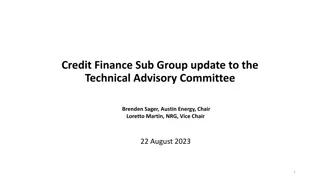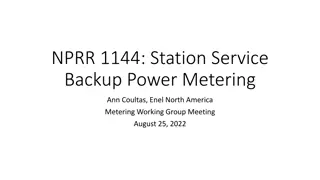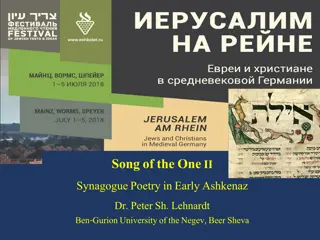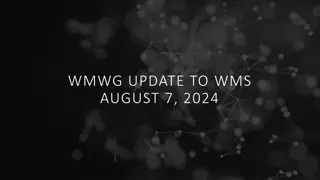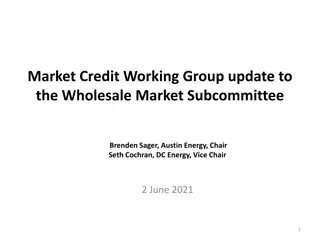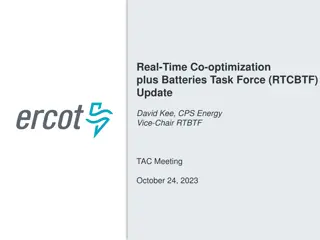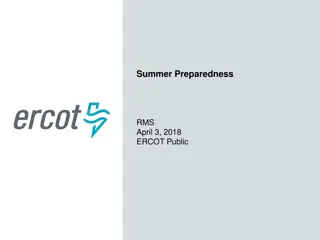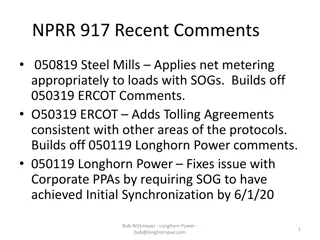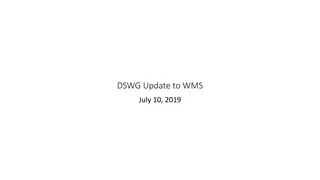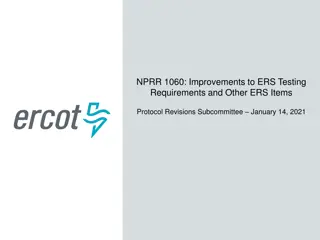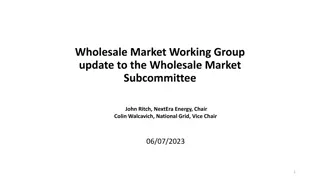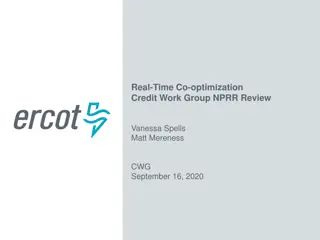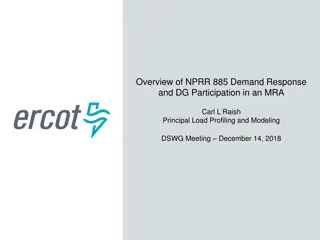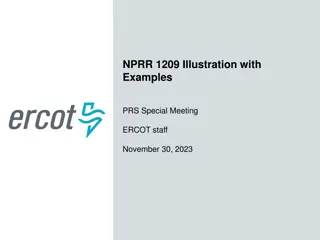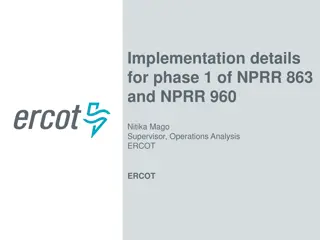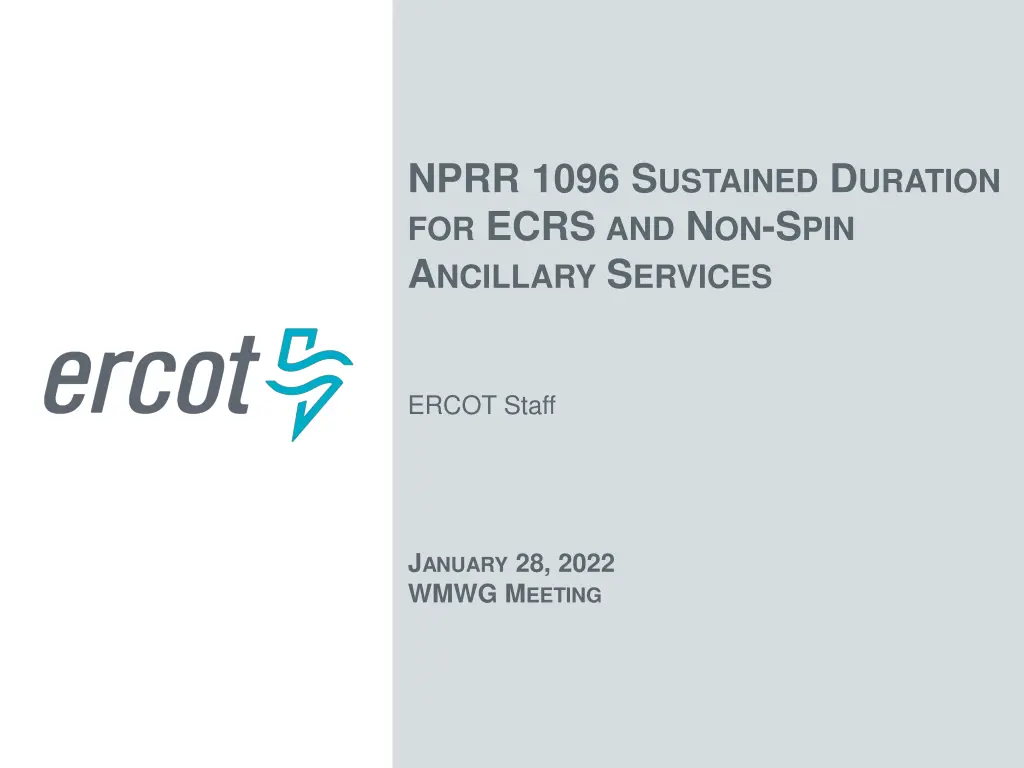
Sustainable Duration for ECRS and Non-Spin Ancillary Services in ERCOT Staff Meeting
NPRR 1096 discusses the sustained duration for ECRS and Non-Spin ancillary services in ERCOT, recommending a two-hour duration for ECRS and a four-hour duration for Non-Spin based on historical load forecast errors and operational needs. The rationale behind the recommendation, example scenarios, and implementation approach are detailed in the document.
Download Presentation

Please find below an Image/Link to download the presentation.
The content on the website is provided AS IS for your information and personal use only. It may not be sold, licensed, or shared on other websites without obtaining consent from the author. If you encounter any issues during the download, it is possible that the publisher has removed the file from their server.
You are allowed to download the files provided on this website for personal or commercial use, subject to the condition that they are used lawfully. All files are the property of their respective owners.
The content on the website is provided AS IS for your information and personal use only. It may not be sold, licensed, or shared on other websites without obtaining consent from the author.
E N D
Presentation Transcript
NPRR 1096 SUSTAINED DURATION FOR ECRS AND NON-SPIN ANCILLARY SERVICES ERCOT Staff JANUARY 28, 2022 WMWG MEETING
Background NPRR1096 originally had proposed that ECRS and Non-Spin be provided with a capacity that is capable of being sustained for six consecutive hours. After receiving feedback from stakeholders, ERCOT conducted additional analysis and submitted comments on November 3, 2021 recommending a two hour duration for ECRS and four hour duration for Non-Spin. The underlying thought process for this recommendation was, 1. ECRS and Non-Spin are both ancillary services that can be expected to be utilized to cover risks associated with net load forecast errors. 97% of historic sustained net load under forecast errors with 4,000 MW or more magnitude have lasted 4hrs or less. All of the sustained net load under forecast errors with 4,500 MW or more magnitude have lasted 4hrs or less 2. ECRS and Non-Spin play the role of replacement reserve, may be also deployed to restore Regulation and RRS. Non-Spin may also be used to cover risks associated with intra-day forced outages of thermal resources which may last several hours. NERC s BAL-002 requires ERCOT to recover PRC within 90 minutes. 2 PUBLIC 2
Example Scenario 1. Consider operating on a day with moderate forecasted load during shoulder months with a portion of the generation fleet on outage. A fast-moving weather front causes a large net-load under-forecast error (ex. load picks up significantly, wind drops). Then a large thermal unit gets forced out. The Non-Spin Ancillary Service would be required to cover the supply shortfall till additional offline units can be brought online. The next available unit that can come online needs 4-6 hours to start. The deployed Ancillary Services would need to be sustained till this unit can be brought online. 2. 3. 4 - 6 hours out Long Lead Time Unit Non-Spin < 1 hr Start Units Load Base Commitment 2 3 4 5 6 7 8 9 1 3 PUBLIC 3
Rationale A duration limit on the capacity that is used to provide ECRS and Non-Spin is needed under today s market constructs because, In Real Time, during a failure to provide situation, SASM is the only tool available and SASM has atleast two-hour lead time for AS procurement. Current DAM and RUC process do not take an ESR s state-of-charge and/or energy capability into account. A 1-hour ESR could be awarded a particular A/S for all 24 hours in a day. NPRR1096 does not require a resource to stay deployed beyond the hours in which it is carrying ECRS or Non-Spin. That said, ERCOT is seeing behavior wherein 1hr ESRs are carrying Ancillary Services 24x7. ERCOT s tools are currently not designed to enforce State of Charge based limitations on provision of A/S and cannot procure replacements in a timely manner during a failure to provide situation. A duration limit is needed till future design changes to market tools are implemented. Ex. RTC NPRR1011 had one hour limit for ECRS and Non-Spin. Ex. of design changes include consider state of charge for ESRs or the implementation of RTC could lead to a reassessment of the proposed duration limits. 4 PUBLIC 4
Implementation Approach NPRR 1096 proposes to establish a durationbased MW limit as a part of the qualification process for ECRS and Non-Spin. Along with the qualification procedure change, To appropriately monitor available A/S in Real Time from ESRs, ECRS and Non-Spin capacity calculations for ESRs will be changed to account for capacity that can be sustained for two and/or four hours respectively based on real time telemetered state of charge. A new test form will be included in NDCRC to track workflows associated with tracking unannounced ECRS and Non-Spin Capability test. This approach allows for the quickest implementation of NPRR1096 and allows ERCOT to resume qualification of ESRs to provide Non-Spin. 5 PUBLIC 5
Summary Ensuring 4-hour minimum duration requirement for Non-Spin will provide ERCOT Operators better certainty of available reserves when planning for grid operations 2 to 4 hours out. ERCOT recommends moving forward with NPRR1096 with ERCOT 11/3 comments. ERCOT will continue to work with stakeholders to develop a longer-term solution that may involve broader system changes. 6 PUBLIC 6


